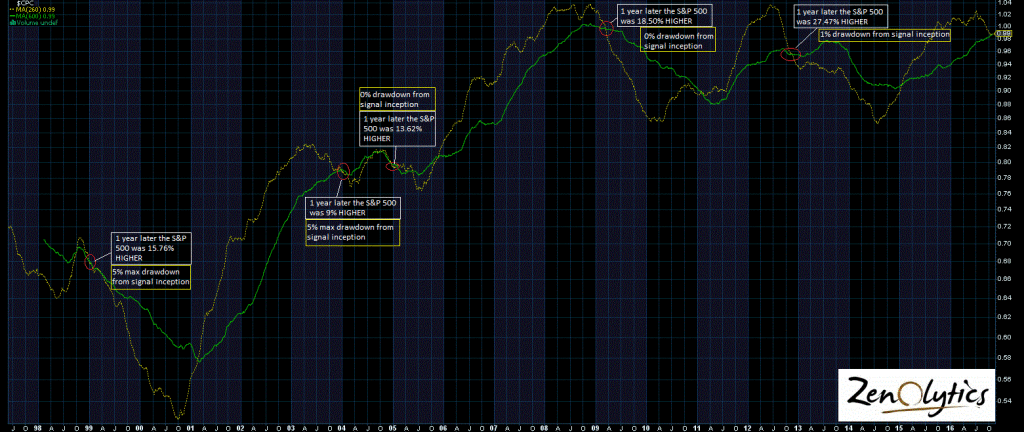The combined put/call ratio is a useful tool to measure sentiment, yielding contrarian driven results that are beneficial to an investor more often than not. There are other ways to use the put/call, however, beyond your simple when the put/call moves up to X level then the market should be bought as pessimism is excessive and when it moves down to X it should be sold as optimism is excessive.
Some pretty impressive results can be had from examining two very long-term moving averages of the put/call ratio, in this case the 260 and 600 day simple moving average, with the intent of studying what happens to the markets when these moving average cross.
Think about what it means for just a second when these two long-term moving averages cross. It's a pretty important indicator of comfort or discomfort with a market, not in a contrarian sense, in that comfort equates to complacency. But, rather, in a very real sense, as in this case it equates to comfort that has evolved from some very pessimistic conditions prior.
With that frame of thinking in mind, when the 260 day moving average crosses below the 600 day moving average, it represents capital becoming comfortable moving back into the markets following a pronounced period of pessimism. The 260 day moving average is above the 600 day moving average exclusively during recessions and panics. It represents an investor class that basically hates the market. The 260 day moving average going back below the 600 day moving average represents an investor class that is warming up to the market again, with capital moving into risk assets. Here's a look at what happens to the S&P 500 12 months following capital becoming comfortable with the market as reflected by the put/call ratio:
click chart to enlarge
The most impressive part of this study is not the average gain of 16.87% in the 12 months following the sentiment shift, but rather the fact that the maximum drawdown once the cross takes place averages 2.2% when the signal is taken at month end once triggered. Essentially, once this sentiment shift takes place, the markets simply take off, without much in the way of looking back over the next 12 months.
A slice of apple pie amidst the chronic pessimism and indecision investors face at this juncture.

